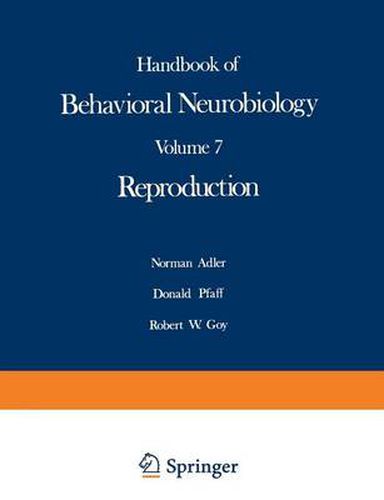Readings Newsletter
Become a Readings Member to make your shopping experience even easier.
Sign in or sign up for free!
You’re not far away from qualifying for FREE standard shipping within Australia
You’ve qualified for FREE standard shipping within Australia
The cart is loading…






This title is printed to order. This book may have been self-published. If so, we cannot guarantee the quality of the content. In the main most books will have gone through the editing process however some may not. We therefore suggest that you be aware of this before ordering this book. If in doubt check either the author or publisher’s details as we are unable to accept any returns unless they are faulty. Please contact us if you have any questions.
The subject of this book is reproduction-specifically, the interplay between reproductive physiology (especially neural and endocrine events) and behavior. In presenting this topic, there are two expository goals. The first is to study repro- duction at all of the major levels of biological organization-from the molecular (e. g. , hormone receptors in the brain), through the cellular (e. g. , ovarian morphogene- sis), systemic (e. g. , operation of the hypothalamo-pituitary-ovarian axis), and the organismic levels of organization. Analogously, behavior is treated from the most molecular, elementary, and fundamental components (e. g. , copulatory reflexes), through behavior in the reproductive dyad (e. g. , analysis of female sexual behav- ior), to complex social behavior (e. g. , the interaction of social context and behav- ioral sex differences). To the extent that these levels of biological and behavioral organization rep- resent a vertical axis in behavioral neurobiology, a second goal is to treat the horizontal axis of biological organization, viz. , time. There are, therefore, treat- ments of evolutionary origins (e. g. , a phylogenetic survey of psychosexual differ- entiation), genetic origins in the individual (e. g. , sexual organogenesis), ontoge- netic development (e. g. , behavioral sexual differentiation), and the immediate physiological precursors of behavior (e. g. , hormonal and nonhormonal initiation of maternal behavior). In addition to tracing the origins of reproduction and reproductive behavior, one extends the time-line from the behavior to its physio- logical consequences (e. g. , neuroendocrine consequences of sexual behavior).
$9.00 standard shipping within Australia
FREE standard shipping within Australia for orders over $100.00
Express & International shipping calculated at checkout
This title is printed to order. This book may have been self-published. If so, we cannot guarantee the quality of the content. In the main most books will have gone through the editing process however some may not. We therefore suggest that you be aware of this before ordering this book. If in doubt check either the author or publisher’s details as we are unable to accept any returns unless they are faulty. Please contact us if you have any questions.
The subject of this book is reproduction-specifically, the interplay between reproductive physiology (especially neural and endocrine events) and behavior. In presenting this topic, there are two expository goals. The first is to study repro- duction at all of the major levels of biological organization-from the molecular (e. g. , hormone receptors in the brain), through the cellular (e. g. , ovarian morphogene- sis), systemic (e. g. , operation of the hypothalamo-pituitary-ovarian axis), and the organismic levels of organization. Analogously, behavior is treated from the most molecular, elementary, and fundamental components (e. g. , copulatory reflexes), through behavior in the reproductive dyad (e. g. , analysis of female sexual behav- ior), to complex social behavior (e. g. , the interaction of social context and behav- ioral sex differences). To the extent that these levels of biological and behavioral organization rep- resent a vertical axis in behavioral neurobiology, a second goal is to treat the horizontal axis of biological organization, viz. , time. There are, therefore, treat- ments of evolutionary origins (e. g. , a phylogenetic survey of psychosexual differ- entiation), genetic origins in the individual (e. g. , sexual organogenesis), ontoge- netic development (e. g. , behavioral sexual differentiation), and the immediate physiological precursors of behavior (e. g. , hormonal and nonhormonal initiation of maternal behavior). In addition to tracing the origins of reproduction and reproductive behavior, one extends the time-line from the behavior to its physio- logical consequences (e. g. , neuroendocrine consequences of sexual behavior).